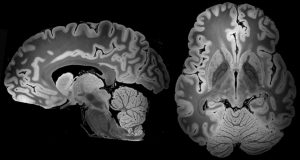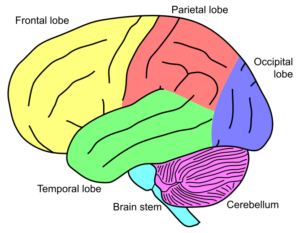
Snapshot: What is Neuropathy?
Our nervous system consists of the central and the peripheral nervous system. The brain and spinal cord are components of our central nervous system (CNS), while the peripheral nervous system Read More…
Bill Nye is back in his lab with NAF and Biogen—breaking down the science of Friedreich Ataxia in a new video series. WATCH NOW
A collection of resources for individuals and families affected by Gluten Ataxia.
Gluten Ataxia is a rare autoimmune condition that causes difficulties with balance and coordination. This condition is called ataxia. Gluten Ataxia is an acquired form of Ataxia, meaning that the ataxia symptoms are the result of underlying injury, such as an autoimmune response.
For complete information about symptoms, diagnosis, and treatment of Ataxia, visit our What is Ataxia? page. This page contains NAF’s resources that are specific to Gluten Ataxia.
Sign up for our mailing list to stay up-to-date on Ataxia news.
Presented by Dr. Marios Hadjivassiliou
This webinar gave an overview of the causes and symptoms of the disease, the typical diagnostic journey for those affected, what to expect for clinical care, and an overview of current research into the disease.
NAF offers webinars on many topics to help you live better with Ataxia. Visit www.ataxia.org/webinars to find other helpful presentations.
Participating in a research study or clinical trial is one way to take an active role in furthering understanding and treatment of Ataxia. It is also a way to get access to new treatment options before they are widely available. To find studies that are enrolling patients, visit our Help Develop New Treatments page.
Gluten Ataxia is an autoimmune condition. It is caused when someone’s immune system mistakenly attacks healthy cells in the cerebellum (the coordination center of the brain) and related brain regions due to gluten reactivity. People with Gluten Ataxia tend to have higher levels of anti-gliadin and Transglutaminase 6 (TGG) antibodies, though there is some controversy about using TG6 for diagnostic purposes.
Gluten Ataxia symptoms develop slowly over time. Since symptoms appear slowly, they can be easy to miss at first. In rare cases, symptoms may develop rapidly out of nowhere. Impaired balance and coordination are the main symptoms associated with Gluten Ataxia. People with Gluten Ataxia may also develop neuropathy, which is the progressive loss of feeling in the hands and/or feet. Other potential symptoms include jerky vision, as well as gastrointestinal issues similar to those with Celiac Disease. There may or may not be detectable shrinkage of the cerebellum.
Gluten Ataxia symptoms are progressive. So long as someone continues to consume gluten, symptoms will worsen.
The average age of Gluten Ataxia symptom onset is in someone’s early 50s. However, people can develop symptoms at older or younger ages. Dietary treatment is highly effective for Gluten Ataxia. Most people see improvement in symptoms within one year of adherence to a strict gluten-free diet. However, significant gluten cross-contamination, such as cooking gluten-free ingredients with utensils that have processed gluten-containing foods, can lead to lowered effectiveness. Additionally, some people may not see significant symptom improvement if their cerebellum has already been significantly damaged.
Nonetheless, people with Gluten Ataxia should at the very least see symptom stabilization if they are strictly following a gluten-free diet.
In addition to diet, people with Gluten Ataxia can benefit from rehabilitation strategies can help manage ataxia symptoms. This includes exercise, physical therapy, occupational therapy, and speech therapy.
A neurologist is often the most helpful specialist in recognizing symptoms and diagnosing the disease that causes Ataxia. A neurologic examination can determine whether a person has ataxia symptoms. MRI brain imaging and blood tests are common tests used to diagnose Gluten Ataxia. Sharing personal or family medical history related to autoimmune conditions or Celiac Disease, can be helpful during the diagnosis process. For many though, a diagnosis of Gluten Ataxia is given once improvement has occurred on a gluten-free diet.
SCAsource provides Ataxia research news, directly from researchers to the Ataxia community. Visit SCAsource to see their full collection. Here is a collection of articles related to Gluten Ataxia.

Our nervous system consists of the central and the peripheral nervous system. The brain and spinal cord are components of our central nervous system (CNS), while the peripheral nervous system Read More…

Articulation refers to the ability to produce speech sounds using the tongue, lips, jaw, and the roof of your mouth. All of these organs are also known as articulators. The Read More…

Speech intelligibility refers to how many words can be correctly understood by a listener. For example, if someone says the phrase, “My name is John,” and a listener hears, “My Read More…

Nystagmus, also known as ocular ataxia, is a term that refers to uncontrollable eye movement- usually a repetitive cycle of slow movement in a specific direction followed by a quick Read More…

What is it? Magnetic resonance imaging (MRI) is a type of technology used to take detailed pictures of the body. It is commonly used to detect abnormalities in the body, Read More…

The cerebellum, often referred to as the “little brain”, is part of the brain that is located behind the cerebrum (forebrain). The cerebellum accounts for about 10% of the brain’s Read More…
